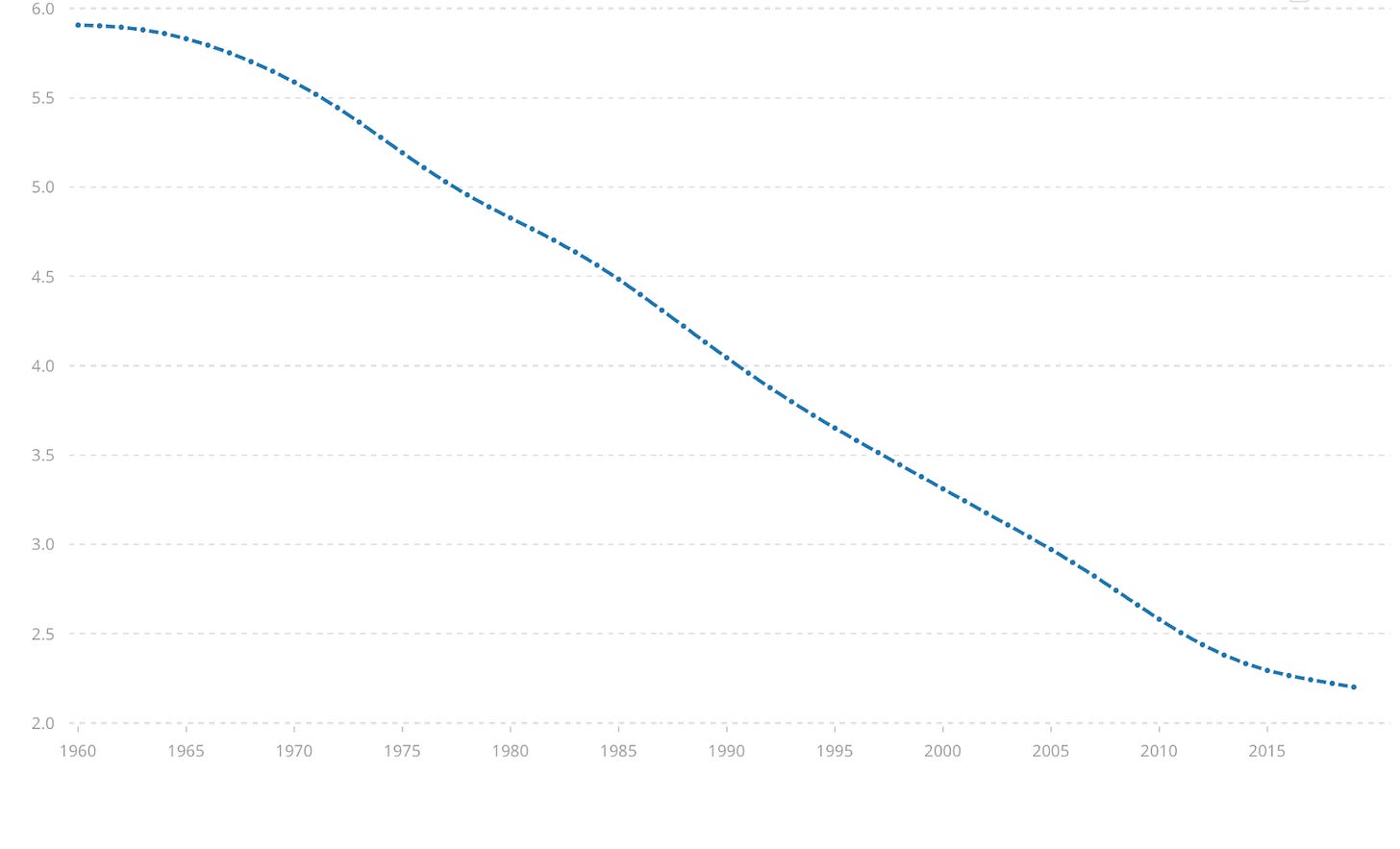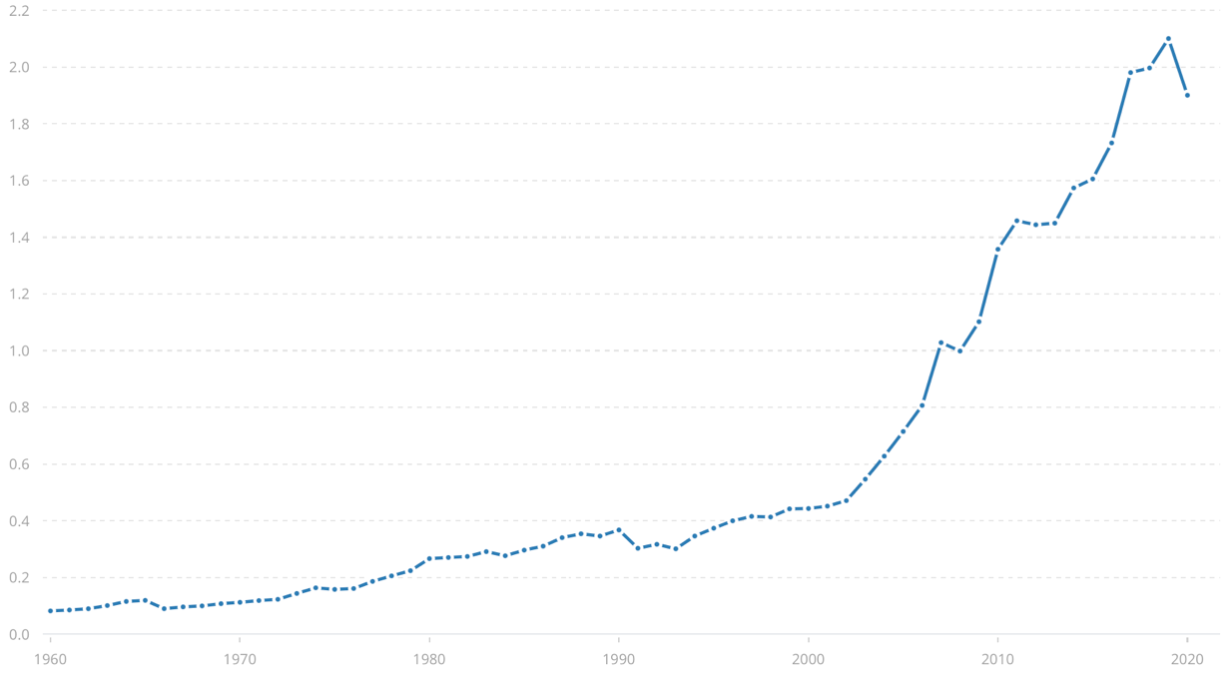Key Points
Indian politicians on the state and federal level are trying to limit parents to 2 children
This has a bad history in India and population control has failed in other places too
It’s also not necessary - as a country develops, fertility falls on its own
Indian politicians have recently been considering population control policies. The BJP governments in Assam and Uttar Pradesh have both suggested they’re going to pursue a two child maximum policy with benefits for those who abide by it as well as strict penalties for those who don’t. At the federal level, BJP aligned MPs in the Rajya Sabha have also announced their intention to pursue policies similar to these that also penalize people for having more than two children - though their effort is little more than messaging, it is still noteworthy.
India has a history with these ideas - most famously during the Emergency from 1975-1977. Indira Gandhi’s son, Sanjay Gandhi, held no office but was especially influential during this time. He had a five point program he was trying to implement and the most controversial part of it was related to family planning and population control. He saw those policies as essential for economic development as they would lead to a lower population. Initially, the government tried incentives like free radios, but after they failed, the government tried other paths including mandated sterilization for government services.

The response from the West was fairly positive. Not only were governments fine with it, NGOs like the Ford and Rockefeller Foundations also supported Indira Gandhi. Then-World Bank President Robert McNamara traveled to India to praise the government for the program.
The program itself was run very poorly and led to numerous injuries and deaths. Like many other Emergency era schemes, it also didn’t work. As a result of it, the Indian public developed an aversion to family planning that has hampered efforts to implement this kind of scheme since.
Population control has also yielded poor results in other countries. India need only look across the border at China. That government is trying to encourage parents to have three children after decades of experimentation with the one child policy and a few years of experimenting with a two child policy.
China’s demographic problems are in a way similar to the ones in the United States. Both countries have fertility rates below 2.1 which means the population has started shrinking. India however has a TFR of 2.2 - the population is growing but not by much. India’s higher TFR is due to its much younger population - India’s median age is 28.7, China’s is 38.4, and the United States’ is 38.5.
India has one of the largest young populations in the world and they’ve been hit especially hard by COVID and the ensuing economic recession. The biggest priority for the government needs to be getting these people back to work and back in school because if they can do this, the population will naturally level off.
As countries industrialize and economically develop, population growth tends to slow on its own. The states talking about pursuit of these policies, Uttar Pradesh and Assam, are seeing their fertility rates fall already. They don’t need to speed this artificially but neither does the rest of India. The two below graphs prove this point - the fertility rate across all of India has already been falling since 1960 while the GDP per capita has risen.
If Indian policymakers focus on industrialization, many other problems will fall away. Fertility is one of those.
That’s a wrap for the week - thanks for reading. I hope this was informative and enjoyable and would appreciate it if you could share it with a friend or colleague.
If you’ve got any questions or feedback or want me to cover something, please email me at anik.torana@gmail.com or reach out to me on Twitter @AnikVJoshi and I’ll do my best to respond.
Other things to read
Reuters photojournalist Danish Siddiqui was killed in Afghanistan. The Pulitzer winner was one of the most well known chroniclers of the war and you may have seen some of his work covering COVID in India earlier this year. The BBC had a nice remembrance of him that’s worth taking a look at
Also this week, I wrote a piece for The Bulwark about India’s long history of repressing speech the government didn’t like. It started in the 1950s and has not improved since - different politicians have always found good reason to pare down freedom of expression.
This last one doesn’t have to do with India but Paul Musgrave had one of the more interesting pieces I’ve seen in a while about America’s collapsing meritocracy. He’s on Twitter @ProfMusgrave




